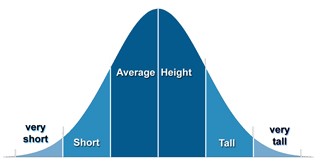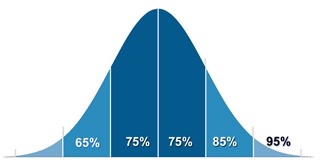Teachers, school administrators, school boards and government agencies across America work diligently to educate our youth, yet the U.S. consistently ranks squarely in the middle of worldwide achievement in Science, Math and Reading. How can this be in what we all like to think of as the greatest nation on earth?
There are two underlying fundamental problems with the American education system in the 21st century. The first is that there is not now, nor has there ever been, an American Education System. From the time of the first New England schoolhouse to today, local education has been paid for by local tax dollars, with local government setting curriculum and standards for hiring teachers in accordance with the bidding of local voters.
 Beginning at a time in our emerging nation when simply knowing how to read and write qualified one to be a teacher, grassroots teaching methods, policies and procedures were in place and in practice long before anyone thought about an education ‘system’. Subsequent attempts to improve, define or standardize education have always approached the task as a molding of the status quo. This approach of building from the bottom up works great for pyramids, but less well when attempting to set standards, achieve specific goals and provide consistency; a defined vision at the top that can be disseminated downward is a better method.
Beginning at a time in our emerging nation when simply knowing how to read and write qualified one to be a teacher, grassroots teaching methods, policies and procedures were in place and in practice long before anyone thought about an education ‘system’. Subsequent attempts to improve, define or standardize education have always approached the task as a molding of the status quo. This approach of building from the bottom up works great for pyramids, but less well when attempting to set standards, achieve specific goals and provide consistency; a defined vision at the top that can be disseminated downward is a better method.
The second underlying issue within education in America is that whatever systems we do have in place, e.g. testing methods and requirements for academic advancement, are haunted by values, decisions and conclusions that were arrived at long ago, based upon a mere spec of the information (not to mention technology) that we possess today. Two examples are the grading system and the use of the bell curve.
Grading
As one might expect, when there no systems in place where a need exists, any system that presents itself may quickly become the de facto system until or unless it is replaced by a more popular system. A case in point is the standard A through F grading system which was devised at Mount Holyoke College in Massachusetts in 1897. Originally the lowest grade at Mount Holyoke was an ‘E’, however after one year administrators purposely changed the failing grade to ‘F’, and so it has been since. That seemingly innocuous and logical decision has caused incalculable emotional damage to students over the ensuing years. Where a grade of ‘E’ might elicit thoughts such as ‘I did very poorly’, or ‘I don’t get this subject’, or ‘I could have tried harder’, a grade of ‘F’ is interpreted as, ‘I failed’. And in that despondent moment, ‘I failed’ can easily turn the corner and become, ‘I am a failure’. No – you’re not.
We must abandon the long-held concepts of passing and failing in education.
The Bell Curve
The Bell Curve, or Normal Distribution Curve, forms the basis for much curriculum design and social classification in education today.
A normal distribution is an arrangement of a data set in which most values cluster in the middle of the range and the rest taper off symmetrically toward either extreme. A graphical representations of a normal distribution is often called a bell curve because of its flared shape.
Height is an example of something that follows a normal distribution pattern. Most people are average height, the number of people that are taller and shorter than average are fairly equal and a very small (and still roughly equivalent) number of people are either extremely tall or extremely short.
Below is an example of a normal distribution curve:

When test scores are plotted, results within a class will also result in the bell pattern, with most students scoring in the mid-seventieth percentile, with fewer students scoring in the mid-eightieth and mid-sixtieth percentiles, and only a few scoring very high or very low.

Education in America is of course a descendant of education in England as it was in the seventeenth and eighteenth centuries. Studies in divinity, law, and medicine were typical, along with Latin and often French accompanying studies in literature. When in pre-revolutionary America Harvard University (originally New College) opened its doors in 1636, it was only natural to install a similar curriculum. As Yale and Princeton and other bastions of higher learning subsequently welcomed students, they followed suit. Not much has changed.
OK – Latin class is no longer a hot ticket, but the focus of the curriculum hasn’t been altered much – math, science, literature, language – basically readin’, writin’ and ‘rithmatic – the Classidemics. We value having an aptitude for these topics because the brave British that settled this land valued those aptitudes. We call people with these aptitudes, intelligent. We call people who do not have these aptitudes, not intelligent, or much worse.
As our nation and education practices developed, standardized tests were created to measure student achievement. After plotting these test scores the resulting bell curve theoretically gave teachers and parents an idea of how intelligent each child is in relation to his/her classmates.
From one’s place on the bell curve terms like ‘D student’ were born and frequently spoken within earshot of the student, often causing students to feel shame or guilt or stupid. Worse, some students come to believe that they are a ‘D student’ when in fact they suffer from a correctable learning disability or are truly gifted in an area other than classidemics.
On the other side of the coin, we note that only a very small percentage of the students – the ‘A Students’ – feel great about themselves, having been anointed one of ‘the smart ones’. The majority of the students are led to believe that they are ‘just average’, and along with that can come the notion that trying hard to succeed probably won’t get them very far because they’re not exceptional. This is a shame.
These tests have always been problematic because they were usually written by mainstream white Christian adults for primarily mainstream white Christians students, and were/are thereby unavoidably biased to some degree. This is a commonly debated topic, worth solving (if possible), but it is a symptom – not the disease. The disease is that there’s only one aptitude being tested, still prizing seventeenth century British values above all else in twenty-first century America.
In a different world – say after a devastating war, if there’s anything left – the most valued personal aptitudes would necessarily be different. Tests might require test-takers to imagine, sketch and plan a system by which one person peddling a bike powers several machines at once using gears and pulleys or discuss ways to grow vegetables in very acidic soil or demonstrate the ability to ease others’ pain by touch or song or thought. A different set of people would magically now be intelligent, and many of today’s intellectuals would quickly become the new ‘D Students’ dismissingly sent off to do something useful.
We must abandon our long-held concepts of intelligent and not intelligent.
What’s the goal?
Since the system we have is the only one we’ve ever known it is all but impossible to imagine education differently, but if starting from scratch, we might ask, “What is our primary responsibility to our children, and to society vis-à-vis our children?”
- First and foremost we need to ensure that each student has the skills and information necessary to successfully function as an adult in society. Life Prep Courses designed to foster the ability to use a personal computer, complete a job application, balance a bank account, create and balance a household budget, discuss alcoholism and other addictions, navigate one’s city and cook basic meals must be instituted. Appendix A contains a more complete working list.
- Additionally, we have an obligation to provide our students and our teachers the resources that will enable our students to compete with the very best minds in the world in their chosen fields.
- Furthermore, we owe it to our young people to enable them to discover the things they are good at and help them nurture those gifts.

The era of participation trophies and orange slices has taken a lot of heat in recent years, but those well-meaning soccer parents and coaches are on the right track – they’re just using the wrong vehicle. The notion that every child should win is noble and sounds reasonable, except that competitive sports is an activity that is specifically designed for the sole purpose of creating an equal number of winners and losers!
Unlike a soccer match, school is a place where all the children can win. We must start by assuming that everyone is good at something – or intelligent in some area – and work to assess each student’s aptitude, inclination and inherent ability, and then provide them with the opportunity to explore, test, evaluate and move forward.
- Lastly we must come to the realization that we cannot improve the American education system until an American Education System exists. Many state’s rights proponents see education as one of the last parts of their society that hasn’t been usurped by the federal government, and are loathe to make concessions. However, in order to compete in the world market and give our children a chance at keeping up, we must as a nation establish and maintain a unified set of minimum requirements for high school graduation – one that truly reflects such a desire.
In Part Two: What About Jane? we explore taking the first steps of a long but worthwhile journey.
•••••••••••••••••••••••••••••••••••••••••••••

A graduate of Portland State University, Steve Kloser is the author of
– Beginning Band – A Guide to Success and
– Let’s Make Music – Classroom Recorder Course.
He is also an accomplished teacher, conductor and composer, having penned numerous pieces including:
–La Vida and Fly With Me.
Teacher, web developer, Packers fan and proud American, Reeno’s usually slanted outlook often presents an unlikely perspective on issues old and new. Reeno currently lives in Portland, OR.
Read more at reeno317.me or follow Reeno on Twitter
•••••••••••••••••••••••••••••••••••••••••••••











